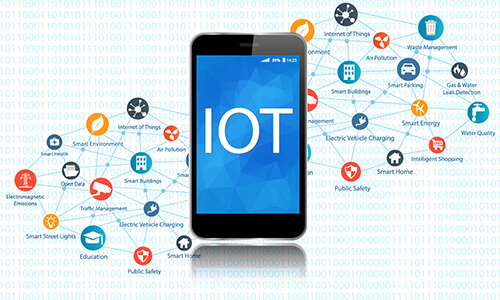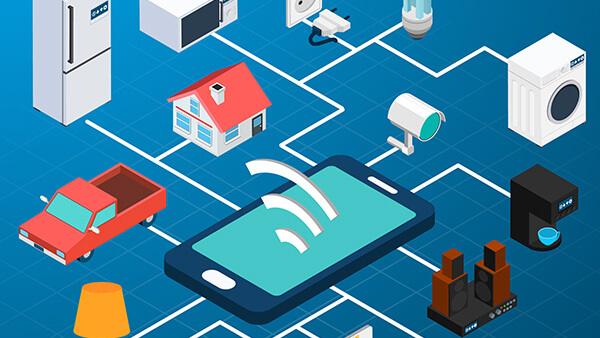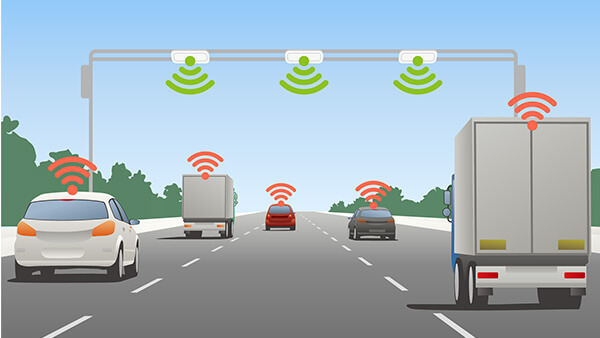Internet of Things
Internet of Things
IoT is the internetworking of physical devices, vehicles, buildings, and other items.
 As you may have noticed, interacting with technology is "the next big thing" and it has arrived in the form of IoTs. Technology continues to amaze us with all the new devices that are considered "smart". However, IoT devices still have issues with security and it is important that you review any new IoT device to see what mitigations you should have in place to prevent the loss of control and/or loss of privacy.
As you may have noticed, interacting with technology is "the next big thing" and it has arrived in the form of IoTs. Technology continues to amaze us with all the new devices that are considered "smart". However, IoT devices still have issues with security and it is important that you review any new IoT device to see what mitigations you should have in place to prevent the loss of control and/or loss of privacy.
IoTs are also known as the Internet of Everything . In order for these devices to work, they are web-enabled and can generate massive amounts of Internet traffic that contains a ton of data to not only make these devices work but also data that can be mined for other purposes. All this data that is internet accessible is what raises the security concerns.
Simple steps to secure your IoT device:
- Read privacy policies and know what information an app or device will collect to determine if you really want to share such information.
- Keep any device that connects to the Internet free from viruses and malware by updating the software regularly.
- Understand privacy settings to control how much information a device or app will collect and display publicly about you.
- Enable multi-factor authentication on your sensitive accounts.
- Change the factory-set password on your home wireless network.
- Be diligent in what links or emails you open.
- Set strong passwords and change them regularly.
- Change the factory-set password on your home wireless network.
- Be diligent in what links or emails you open.
- Set strong passwords and change them regularly.
IoT has the potential to change

How we communicate with home devices

How we transport ourselves

How our cities function
Basically, IoT devices can become eyes and ears to what's going on because these devices use sensors. Sensors are a category called microelectromechanical systems (MEMS) and are manufactured pretty much the same way a microprocessor is manufactured. Sensors can then be combined with application-specific integrated circuits that can then be hardwired to do something specific. Sensors then can be paired with a computer and can also function with wireless communication devices.
Confidentiality supporters are concerned about the IoT's influence on consumers. Also, security experts pointed out that most consumers will not be able to tell the difference between a secure and insecure device in their home network. This is a threat that is being researched and demonstrated by incidents already occurring. This is why the vendors are being asked to focus on securing these devices.
Government Involvement
The FTC has a range of tools currently available to protect your privacy. Please visit their site to read more about their IoT report(s).
- Report Recognizes Rapid Growth of Connected Devices Offers Societal Benefits, But Also Risks That Could Undermine Consumer Confidence
- Careful Connections: Building Security in the Internet of Things
Here is just a brief list of some security reviews you should consider:
- Choices at Point of Sale: Make sure you aware of opt-in and opt-out choices at the time of any purchase.
- Tutorials: Most manufacturers offer tutorials to guide you through privacy settings. Ensure you learn how to do this when purchasing an IoT device.
- Code in the Devices: If the IoT device has code built into the manufacturer's website, check to see when interacting with the device you have features you can choose to enable or not.
- Choices during Set-Up: Most devices will have an initial set-up wizard make sure you make the best privacy choices to ensure you protect your privacy and device control.
Law Enforcement
The FTC Commission continues to encourage Congress to consider privacy and security legislation. The Commission continues to enforce the FTC Act, the FCRA, the Children’s Online Privacy Protection Act, the health breach notification provisions of the HI-TECH Act, and other laws that might apply to the IoT.
